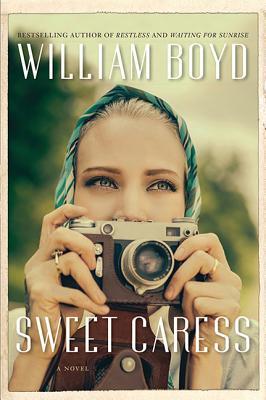SPOILER ALERT
I must confess that the first thing I did after finishing this book was to jump onto Google to see if there ever was a female photographer called Amory Clay. That’s how convincing this book was, with its mixture of real characters and events. I couldn’t tell whether I had just read a fictionalized biography or whether the whole thing was Boyd’s creation- and it was the latter.
The book is two narratives. One is Amory’s journal from 1977 when she is living in a small cottage on the Scottish coastline, within sight of the Isle of Mull. She is widowed, her daughters have left home, she has retired from her career as photographer, and she is getting old. (Not that old- “only 70”, says she for whom 70 is not too far away!) The journal entries are not long, and are more a springboard to her memories, the other narrative, which flow more or less chronologically.
Amory was born on 7 March 1908, her father a writer, and the eldest of three children. Her sister Peggy was marked out early as a musical genius, her brother Alexander (Xan) was a strange, fey lad who collected guinea pigs but later had a career quite unheralded by his childhood. Her father went to World War I and returned mentally unstable. She was sent to boarding school, which she resented, as neither of her siblings were sent away, and she only later realized that there was a financial reason for her exile. On a vacation at home, her father tried to drive them both into a lake, an act that precipitated his committal to an asylum for many years and which, naturally enough, made Amory distrustful of her father and hurt by his heedlessness. If one wanted to play amateur psychiatrist, one could argue that this betrayal by her father shaped her rather distant relationships with men, who were either unavailable, in the case of the wealthy but married Cleve Finzi, or ambivalent in the case of Charbonneau. The pattern was broken when she married Sholto Farr, becoming Lady Farr, but this ended up in a betrayal of both her and her two daughters, of a different kind.
From her adolescence, encouraged by her uncle, she embarked on a career as a photographer which took her to Berlin, New York and Vietnam, ending finally in her cottage on the Scottish coast. The book is both a professional and personal biography. It is liberally interspersed (like a Sebald book) with black and white photographs, mostly taken by Amory. It was probably these photographs more than anything else that made me question whether this was a real autobiography or not. Quite frankly, they are very poor photographs, in no way reflective of a professional or artistic photographer. They are just like the Box Brownie photographs your Uncle Les might have taken in the 1950s.
The narrative of Amory’s life is told against a backdrop of real events and people, not in a Forrest Gump way, but as incidental background, off at an angle. This helps to add to the verisimilitude of the narrative by not straining the reader’s credulity by putting her into the centre of the action but forming a context for the places and situations in which she found herself. It only broke down for me in the last part of the book where it seemed that the author was grasping for a plot development that would encapsulate the 1970s and chose cult-behaviour in America. I don’t know if it was because the book was running out of steam, but this final phase of Amory’s life, where she tries to ‘rescue’ her daughter from the clutches of cult leader Tayborne Gaines, seemed rather melodramatic and superfluous.
I read this as a bookgroup read (in fact, I chose it on the basis of Restless which I very much enjoyed when I selected it as an earlier bookgroup read). Some of us felt rather uncomfortable that a male writer was writing from a female perspective, particularly in sex scenes. This didn’t worry me at all – I don’t like where you end up when you prohibit people from writing from anything other than their direct experience- and I thought that he wrote sex from a female perspective particularly well.
So did I feel cheated when I found that Amory Clay was a figment of William Boyd’s imagination? No, not at all. He did it well enough to make me wonder, and he created a credible female character against a backdrop of world events.
My rating: 8/10
Sourced from: CAE Bookgroups


I agree, this puritanism about ‘appropriation’ is daft. How can anyone write a novel with only the PoV of one gender? That’s how we end up with these angry raves featuring stereotypes of men who are all horrible; it’s puerile.
This sounds like one for me! Thanks for a great review.
Pingback: Six Degrees of Separation: from ‘The Lottery’ to… | The Resident Judge of Port Phillip